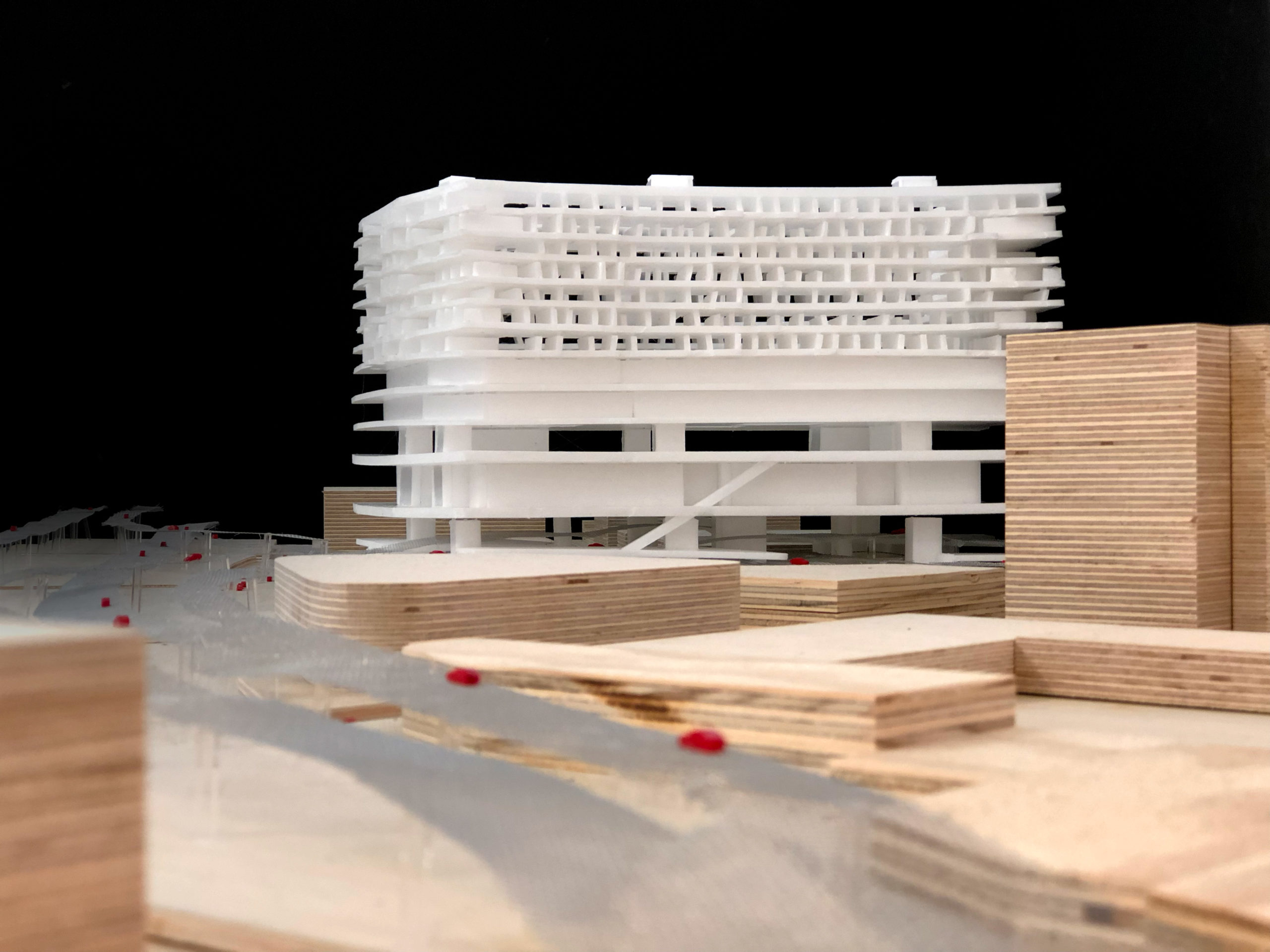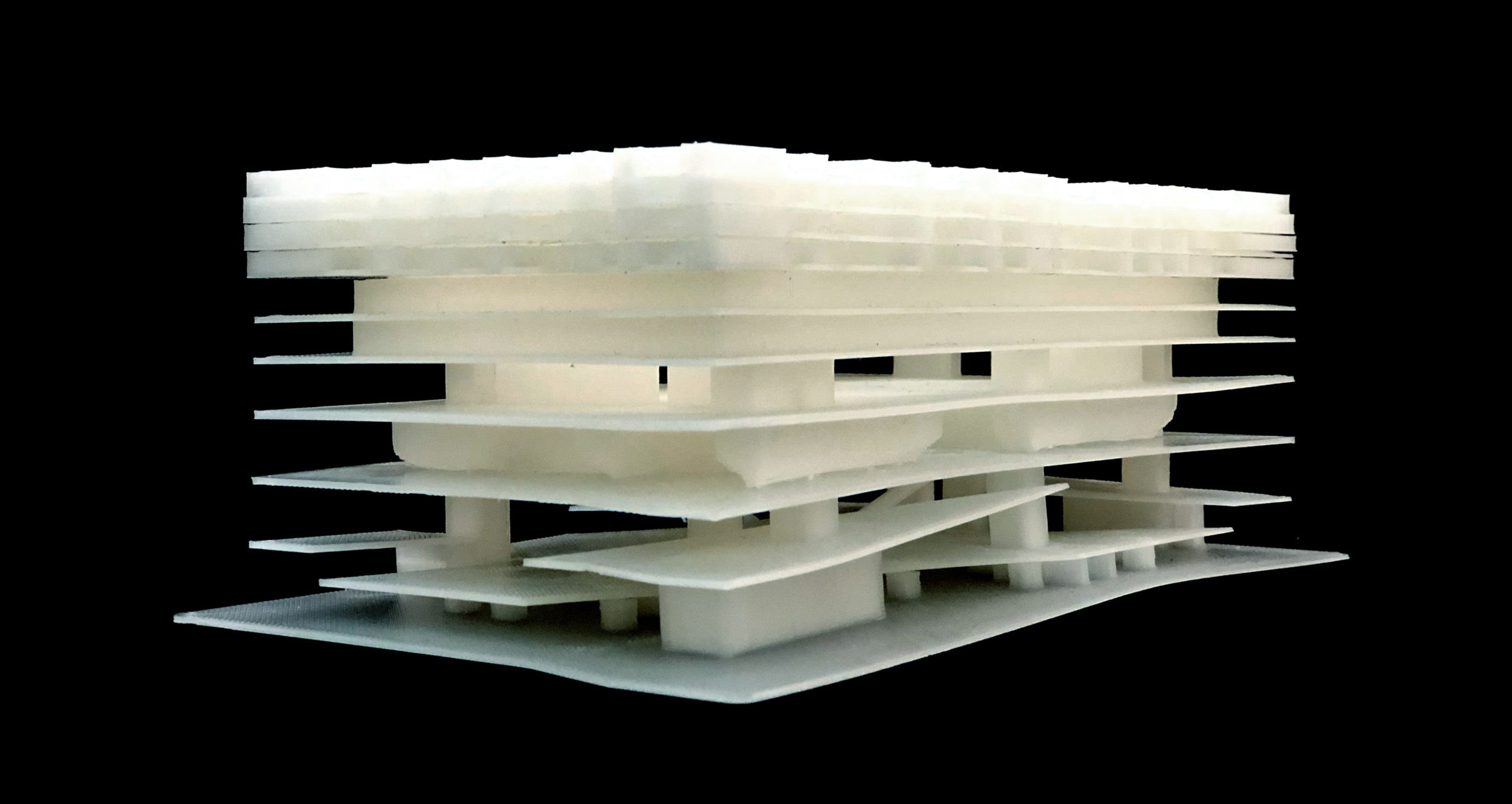RE-LINK Connecting [Disconnected] Neighborhoods
Master Thesis by: Ying Wang – M.Arch / Thesis Advisor: Mark Mueckenheim
Recognizing that elevated highway infrastructure, still an important part of an evolving city, disconnects neighboring communities and creates underutilized spaces beneath it. These “underbelly” spaces are typically surface parking lots and storage, and are increasingly occupied by a growing homeless population. RE-LINK analyzes options for repurposing these residual spaces and proposes flexible mixed-use programs and vibrant public open space. Activating this undervalued real estate connects the adjacent neighborhoods.

Under the Freeway – parking or public?
Post-war visions of the city and transportation was grand and expansive. With the automobile, one could travel near and far. To achieve this vision, and provide for the volume of traffic that an urban environment demands, highways were built around and through cities, cutting wide swaths through the city’s fabric. Often these highways were elevated, in part to reduce the impact on the surface streets, but also to serve the scale and speed of traveling by automobile. Consequently, the spaces made below the highways are of low quality, with little development opportunity. Low-investment development filled the void, absent any larger vision. Surface parking and storage makes up most of these underbelly spaces. These spaces do not attract public activities, and homeless populations take advantage of the invisibleness of these spaces.
Introducing intensive commercial, institutional and public activities to these spaces makes the underbelly more visible and provides pedestrian access through the site, under the highway. Reclaiming the underutilized space “creates” new public space.
Mixed Use Programming
A combination of uses – market, entertainment, vocational school, social services and clinic, and housing – are blended on the site to provide for the complex populations in the South of Market neighborhood. Social services and clinic provide support for the homeless and underserved population. The vocational school provides training for the disadvantaged youth. The market and theaters provide goods and services for professionals that live in the development. And the housing is a mix of below-market-rate, market-rate and luxury dwellings. The variety of economic levels in the project will ensure a diverse population of users, bringing the community together
Frictional Adjacencies
The emphasis on increasing density and variety challenges the planning ideas that created the highway and the problems that resulted from them. Cities and their infrastructure once separated dissimilar populations and uses. Mixing populations, weaving public space through commercial and institutional programs and crowding these under and in between the highway serves to RE-LINK the South of Market neighborhood.



